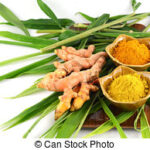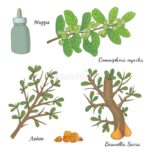PAIN
There are various forms of pain, including acute and chronic pain, breakthrough pain, soft tissue, nerve, referred and even phantom pain.
Pain can be debilitating and have an extremely negative impact on your quality of life.
Common medical drugs include corticosteroids, opioids, antidepressants, anticonvulsants, nonsteroidal anti-inflammatories (NSAID’s) and lidocaine patches. Few, if any of these drugs come without side effects, and some indeed cause addiction, stomach upset, ulcers and as in the case of NSAID’s, increase the risk of heart attack or stroke.
There are many risks involved in the use of corticosteroids and include
- Increased risk of infection
- Impaired wound healing
- Dermatitis
- Increased appetite
- Fluid retention
- Oedema
- Weight gain
- Fat deposits in face, chest, upper back and stomach
- Worsening of previously acquired medical conditions
- Mood change
- Depression
- Hypertension
- Hyperglycaemia
- Cushingoid-like state
- Adrenal suppression and crisis
- Stomach ulcers
- Cataracts
- Osteoporosis
Acute inflammation is a short-term process occurring in response to tissue injury, usually appearing within minutes or hours. It is characterized by five cardinal signs: pain, redness, immobility (loss of function), swelling and heat.
Chronic, long-term, lingering, low grade inflammation is a common theme in many chronic diseases. Chronic inflammation occurs when the triggering agent persists long term because the immune system response failed to eliminate the problem.
This leads to various conditions, such as auto-immune conditions, metabolic disorders, atherosclerosis, obesity, fibrosis and may present as
- diabetes
- cardiovascular disease (CVD)
- arthritis and other joint diseases
- allergies
- chronic obstructive pulmonary disease (COPD)
- psoriasis
- rheumatoid arthritis
- cancer
Chronic inflammation often develops during the transition from acute inflammation to tissue repair, or may be involved through the response to a viral or bacterial infection, which typically induces a chronic inflammatory response, which may last for days, months, or even years.
In some individuals, genetic polymorphisms in inflammatory mediators, such as CRP, TNF-a or IL-6 may be an underlying driver of reduced ability to fight inflammation.
Whatever the cause of your pain and inflammation, there are natural solutions to assist you.
Due to the continued concern of the significant side effects of steroidal and nonsteroidal drugs, many people look to natural compounds to help alleviate pain and inflammation, such as dietary measures and supplements and herbal remedies.
Inflammatory triggers may be seen as stress, radiation, infection, an allergic immune response, trauma and injury, arachidonic acid, or an inflammatory diet.
Common inflammatory pathways include
- NF-Kβ
- regulates many important cellular behaviours, in particular, inflammatory responses, cellular growth and apoptosis.
- NF-κB is a regulator of most mediators of inflammation ranging from chemokines and cytokines to adhesion molecules, kinases and enzymes
- Leukotrienes
- Leukotrienes cause tightening of airway muscles and the production of excess mucus and fluid. These chemicals play a key role in allergies, allergic rhinitis, and asthma, also causing a tightening of your airways, making it difficult to breathe
- IL-1,6
- IL-1 Is a potent regulator of cartilage cell function. It inhibits cartilage cell replication, colony formation in soft agar and proteoglycan synthesis, while it stimulates production of matrix metalloproteinases, which degrade cartilage collagen
- IL-6 is a cytokine featuring pleiotropic activity; it induces synthesis of acute phase proteins such as CRP, serum amyloid A, fibrinogen, and hepcidin in hepatocytes, whereas it inhibits production of albumin
- NO
- is produced by nearly every type of cell in the human body and is one of the most important molecules for blood vessel health. It acts as a vasodilator, which means that it relaxes the inner muscles of your blood vessels, causing the vessels to widen. In this way, nitric oxide increases blood flow and lowers blood pressure
- CRP
- CRP is a protein made by your liver and is secreted into your bloodstream in response to inflammation. Inflammation is your body’s way of protecting your tissues if you’ve been injured or have an infection
- Lipoxygenase
- Break down acids from arachidonic acid to form eicosanoids, which are signalling molecules that play an important regulatory role in the immune responses and other physiological processes
- COX-1 and -2
- Both enzymes produce prostaglandins that promote inflammation, pain, and fever; however, only COX-1 produces prostaglandins that activate platelets and protect the stomach and intestinal lining. NSAIDs block the COX enzymes and reduce production of prostaglandins
- TNF-α
- Tumour Necrosis Factor alpha (TNF alpha), is an inflammatory cytokine produced by macrophages/monocytes during acute inflammation and is responsible for a diverse range of signalling events within cells, leading to necrosis or apoptosis. The protein is also important for resistance to infection and cancers
- Prostaglandins
- are a group of lipids made at sites of tissue damage or infection that are involved in dealing with injury and illness. They control processes such as inflammation, blood flow, the formation of blood clots and the induction of labour.
- Adhesion molecules
- Adhesion molecules are cell surface proteins that mediate the interaction between cells, or between cells and the extracellular matrix (ECM). There are four families of adhesion molecules: immunoglobulin-like adhesion molecules, integrins, cadherins and selectins
- Thromboxanes
- A substance made by platelets that causes blood clotting and constriction of blood vessels. It also encourages platelet aggregation. There are two thromboxanes, derived from arachidonic acid and are related to prostaglandins
- Reactive oxygen species (ROS)
- is a component of the killing response of immune cells to microbial invasion. Recent evidence has shown that ROS play a key role as a messenger in normal cell signal transduction and cell cycling.
- Collagenase/MVP
- A group of proteolytic enzymes that break down collagen and gelatin
- Cytokines
- are a large group of proteins, peptides or glycoproteins that are secreted by specific cells of immune system. Cytokines are a category of signalling molecules that mediate and regulate immunity, inflammation and haematopoiesis
OMEGA 3 FATTY ACIDS
Research has shown the efficacy of Omega-3 polyunsatured fatty acids to assist in the amelioration of inflammation, especially in musculo-skeletal pain.
The active ingredients in fish oil, eicosapentaenoic acid (EPA) and docosahexaenoic acid (DHA), enhance the conversion of COX to prostaglandin E3. A natural anti-inflammatory agent, prostaglandin E3 inhibits the effects of the arachidonic acid conversion to prostaglandin E2, a highly inflammatory substance.
Omega 3 essential fatty acids are able to directly reduce the degenerative enzymes, aggrecanase and matrix metalloproteinase, as well as IL-1, TNF-α, and COX-2 and effectively reduce inflammation in synovial cartilage. (1)
Fish and other seafood (especially cold-water fatty fish, such as salmon, mackerel, tuna, herring, and sardines) Nuts and seeds (such as flaxseed, chia seeds, and walnuts) Plant oils (such as flaxseed oil, soybean oil, and canola oil). Chemicals of this type: Alpha-Linolenic acid.
Acts as a non-selective inhibitor of COX-1 and COX-2, used to block inflammatory prostaglandins, similar to the action of aspirin. (2)
In fact aspirin was originally derived from willow bark, and the active ingredient that is extracted is salicin. Willow bark was used as a painkiller and antipyretic by Sumerians and Egyptians, and then by great physicians from ancient Greece and Rome dating back some 3500 years. Originally used as an antipyretic and anti-inflammatory drug, aspirin then became a drug of choice due to its antiplatelet properties and prescribed for the prevention of cardiovascular and cerebrovascular diseases and more recently for chemo preventive effects against colorectal and other types of cancer.
Salix has been noted to provide pain relief in conditions such as low back pain, osteoarthritis of the hip and knee,
In recent years, various in vitro and animal studies have demonstrated that the anti‐inflammatory activity of willow bark extract is associated with down regulation of the inflammatory mediators tumour necrosis factor‐α and nuclear factor‐kappa B.
Although willow bark extracts are generally standardized to salicin, other ingredients in the extracts including other salicylates as well as polyphenols, and flavonoids may also play prominent roles in the therapeutic actions.
Adverse effects appear to be minimal as compared to non‐steroidal anti‐inflammatory drugs including aspirin.
Turmeric has long been used in both Ayurvedic and Chinese medicines as an anti-inflammatory agent, a treatment for digestive disorders, and to enhance wound healing. Several clinical trials have demonstrated the extract of curcumin’s antioxidant, anti-inflammatory, and antineoplastic effects.
Curcumin has also been suggested as a treatment for colitis, chronic neurodegenerative diseases, arthritis, and cancer. In addition, it regulates the activity of several enzymes and cytokines by inhibiting both COX-1 and COX-2 and NF-kb.
Various experimental and pharmacologic trials have signified its efficacy as an anti-inflammatory agent, via mediated through down-regulating the activity of various signalling mediators including downregulation of COX-2 activity, mitogen-activated and Janus kinases, and inhibiting the generation of TNF-alpha, IL-1, -2, -6, -8, -12, and 5′‐Adenosine monophosphate‐activated protein kinase, a potent blocker of inflammatory-induced NF-κB activation and also is believed to reduce the expression of the NF-κB –regulated gene products including IL-1, IL-6, IL-8, cyclooxygenase-2 (COX-2), 5-LOX, MIP-1α, TNF, adhesion molecules, CXCR-4, c-reactive protein (CRP).
Studies have also indicated that curcumin inhibits peroxidation mainly through its iron binding capacity and is also considered a potential antioxidant against hydrogen peroxide and superoxide radical generation.
Furthermore, Curcumin was also shown to have potential effects on inhibiting oxidative damages caused by chronic stress in vital organs including brain, liver and kidney. (3)
Curcuminoids supplements may be a safe and effective strategy to improve pain severity, according to a 2016 meta-analysis conducted on the analgesic efficacy and safety of curcuminoids. Studies that were incorporated noted a significant ability to relieve pain in osteoarthritis of the knee, whilst data from eight RCTs indicated a significant effect of curcuminoid supplementation in reducing pain severity. (4)
Findings of a randomized double-blind placebo-controlled trial conducted over 53 patients for six weeks duration, support the findings of previous studies on the efficacy of dietary supplementation with curcuminoids in alleviating the symptoms and improving the care of patients with Osteoarthritis. (5)
Pycnogenol inhibits TNF-α–induced NF-kB activation as well as adhesion molecule expression in the endothelium and additionally, oral intake of pycnogenol has been shown to inhibit NF-kB activation in lipopolysaccharide-stimulated monocytes as well, thus decreasing the inflammatory response.
Furthermore, studies have shown that pycnogenol is 50–100 times more potent than vitamin E in neutralizing free radicals and that it helps to recycle and prolong the activity of vitamins C and E and to be effective in reducing blood pressure and reducing the risk of venous thrombosis by its effect on vascular endothelium.
This resin possesses anti-inflammatory, anti-arthritic, and analgesic properties. Boswellia can inhibit the leukotriene biosynthesis in neutrophilic granulocytes by inhibiting 5-LOX, thus affecting various inflammatory diseases that are perpetuated by leukotrienes and clinically is used in the treatment of degenerative and inflammatory joint disorders.
It reduces the total white blood cell count in joint fluid, and it also inhibits leukocyte elastase, which is released in rheumatoid arthritis. One recent study showed a statistically significant improvement in arthritis of the knee was shown after 8 weeks of treatment with B. serrata extract taken three times a day. (1)
 There are many studies published on the alternate, effective pain relieving anti-inflammatory, analgesic effects of plant based extracts and supplements, including Ginger, Resveratrol, Cayenne, Black Pepper, Green Tea, Devil’s Claw, Rosehips, Cat’s Claw, Nettle and Olive leaf, just to name a few. (6)
There are many studies published on the alternate, effective pain relieving anti-inflammatory, analgesic effects of plant based extracts and supplements, including Ginger, Resveratrol, Cayenne, Black Pepper, Green Tea, Devil’s Claw, Rosehips, Cat’s Claw, Nettle and Olive leaf, just to name a few. (6)
- Maroon JC, Bost JW, Maroon A. Natural anti-inflammatory agents for pain relief. Surg Neurol Int. 2010;1:80-.
- Anti-Inflammatory Plants. In: Wiart C, editor. Ethnopharmacology of Medicinal Plants: Asia and the Pacific. Totowa, NJ: Humana Press; 2007. p. 1-55.
- Boroumand N, Samarghandian S, Hashemy SI. Immunomodulatory, anti-inflammatory, and antioxidant effects of curcumin. J Herbmed Pharmacol. 2018;7(4):211-9.
- Sahebkar A, Henrotin Y. Analgesic efficacy and safety of curcuminoids in clinical practice: A systematic review and meta-analysis of randomized controlled trials. Pain Medicine. 2016;17(6):1192-202.
- Panahi Y, Rahimnia AR, Sharafi M, Alishiri G, Saburi A, Sahebkar A. Curcuminoid treatment for knee osteoarthritis: a randomized double-blind placebo-controlled trial. Phytotherapy research : PTR [Internet]. 2014; 28(11):[1625-31 pp.]. Available from: http://onlinelibrary.wiley.com/o/cochrane/clcentral/articles/242/CN-01037242/frame.html
http://onlinelibrary.wiley.com/doi/10.1002/ptr.5174/abstract.
- Ghasemian M, Owlia S, Owlia MB. Review of Anti-Inflammatory Herbal Medicines. Advances in Pharmacological Sciences. 2016;2016:9130979.








